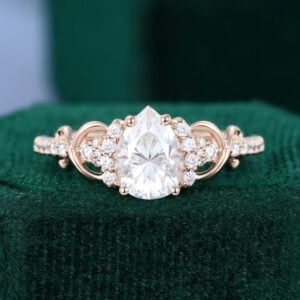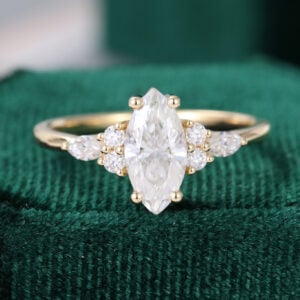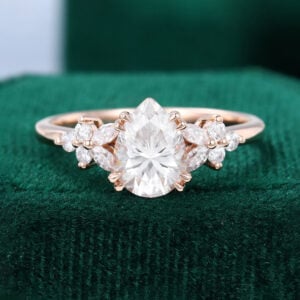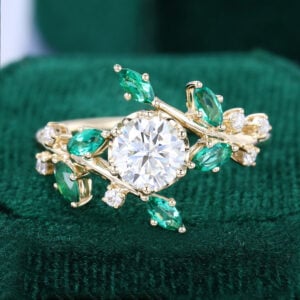In the jewelry world, moissanite has become a popular alternative to diamonds thanks to its stunning brilliance and excellent value. Many people are surprised to discover that moissanite can actually pass a diamond tester.
This often leads to confusion: If moissanite passes the same test, does that mean it’s a real diamond?
The short answer is no — moissanite is not a diamond. However, it shares some similar physical properties that can easily fool traditional diamond testers. In this guide, we’ll explain why moissanite can pass certain diamond testers, how to tell the difference between moissanite and diamond, and what testing methods are the most reliable.
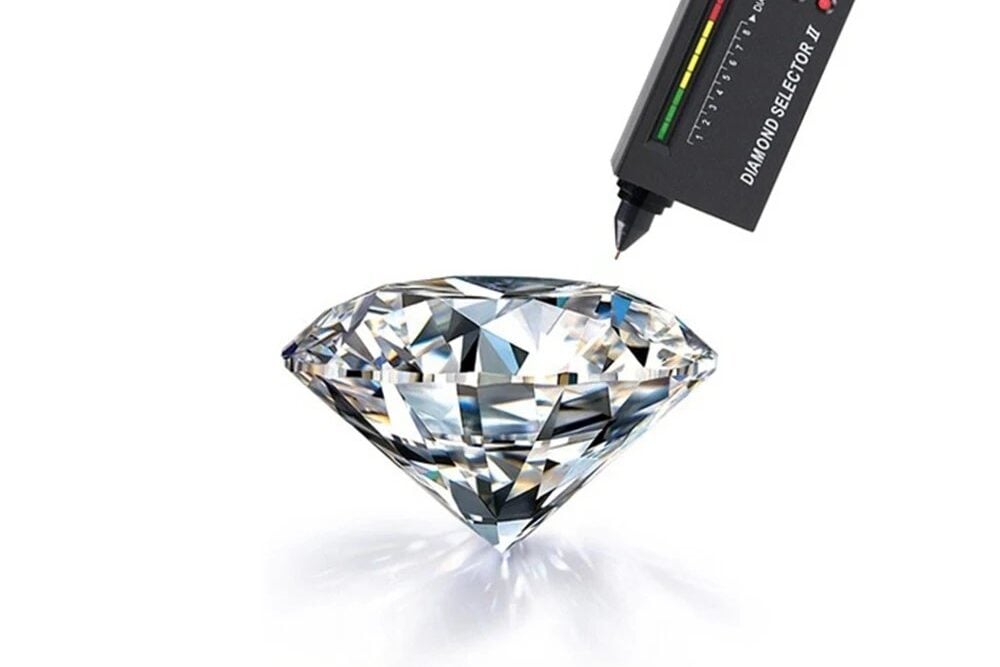
Table Of Contents:
- Types of Diamond Testers and How They Work
- Can Moissanite Pass a Diamond Tester?
- Why Does Moissanite Pass a Thermal Diamond Tester?
- Why Can’t Moissanite Pass an Electrical Diamond Tester?
- Common Causes of Misreading
- Effective Ways to Tell Diamond from Moissanite
- FAQ
Types of Diamond Testers and How They Work
Before we dive in, let’s first understand what a diamond tester is, the main types available, and how they work.
A diamond tester identifies whether a gemstone is a real diamond by analyzing its physical properties, such as thermal conductivity, electrical conductivity, and optical characteristics—all of which differ from those of diamond simulants.
Currently, most diamond testers on the market fall into three main categories:
- Thermal conductivity testers
- Electrical conductivity testers
- UV fluorescence testers
Some advanced devices combine multiple functions—such as a “thermal + electrical conductivity” dual tester—to improve accuracy. When it comes to distinguishing moissanite from diamond, the most common tools are thermal and electrical conductivity testers, which operate as follows:
- Thermal conductivity tester (most common and traditional):
Measures how quickly heat passes through the gemstone. Diamond has the highest thermal conductivity of any natural substance, meaning it transfers heat extremely efficiently. - Electrical conductivity tester:
Measures how well a gemstone conducts electricity. Diamonds are insulators, so they do not conduct electricity, whereas current can pass through certain simulants.
Because different brands of testers may vary in calibration and use, it’s important to follow the manufacturer’s instructions carefully to ensure accurate results.
Can Moissanite Pass a Diamond Tester?
Not entirely. Moissanite can pass a traditional thermal diamond tester, but not an electrical conductivity tester. To better understand the difference between how these testers detect diamonds and moissanite, take a look at the comparison below:
| Type of Tester | Diamond Result | Moissanite Result | Can It Differentiate? |
|---|---|---|---|
| Thermal Conductivity | Pass (shows “D”) | Pass (shows “D”) | No |
| Electrical Conductivity | Non-conductive | Conductive | Yes |
Note: The accuracy of the test can also be influenced by the moissanite’s quality and size.
Why Can Moissanite Pass a Thermal Diamond Tester?
As mentioned earlier, moissanite can pass thermal diamond testers—but why?
Moissanite is a gemstone composed of silicon carbide (SiC), which has a thermal conductivity very close to that of diamond. This similarity often causes traditional thermal testers to mistake moissanite for a diamond.
(For reference: the thermal conductivity of diamond is approximately 1000–2000 W/(m·K), while moissanite’s is around 500–600 W/(m·K).)
Why Can’t Moissanite Pass an Electrical Diamond Tester?
Diamonds—whether natural or lab-grown—do not conduct electricity because their crystal structure lacks free electrons, making them insulators. Moissanite, on the other hand, contains a small number of free electrons within its crystal lattice, giving it weak electrical conductivity.
Electrical diamond testers detect whether a gemstone conducts electricity, which makes it possible to quickly tell moissanite from diamond.
Common Causes of Misreading
Although modern testers can usually tell moissanite from diamonds accurately, misreadings can still occur due to the type of tester used or improper operation. Below are some common causes of detection errors:
- The probe tip doesn’t fully touch the stone, or there’s dust, oil, or metal interference.
- The tester hasn’t been calibrated or is used in extreme temperatures (too cold or too hot), causing unreliable readings.
- Certain “enhanced” gems may have coatings that alter their thermal or electrical conductivity, leading to inaccurate results.
- Small or irregularly cut stones provide limited contact area, causing unstable readings due to rapid heat dissipation.
Effective Ways to Tell Diamond from Moissanite
So, how can you accurately distinguish moissanite from a diamond? Although moissanite may pass thermal conductivity tests, several other reliable methods can easily tell them apart:
- Electrical Conductivity Test
Moissanite has slight electrical conductivity, while diamonds do not. Using an electrical conductivity tester is one of the most precise ways to distinguish between the two.
- Refractive Index Test
Moissanite has a higher refractive index than diamond. By using a refractometer, you can effectively identify moissanite based on how it bends and reflects light.
- Microscopic Observation
Under a microscope, moissanite shows a distinct double refraction (a visible doubling of facet edges), whereas diamonds are singly refractive and do not display this feature.
- Fire and Sparkle Observation
Moissanite has a higher dispersion level than diamond. Under direct light, it produces a rainbow-like “disco ball” effect, while diamonds show a sharper, more intense white brilliance.
FAQs
Not all, but most do. Very small stones—typically those under 3mm—may fail due to their limited size and surface contact.
Yes. Lab-created diamonds (both CVD and HPHT) share the same physical and chemical properties as natural diamonds, so they perform identically on all diamond testers.
Yes. Some advanced gem testers combine thermal, electrical, and optical detection methods to identify moissanite accurately.
No. Moissanite may emit a faint yellow, green, or gray fluorescence, while diamonds typically show blue fluorescence or none at all.
Some can. Many tester pens on the market only use thermal conductivity, which cannot detect moissanite. Only those with electrical conductivity testing can accurately identify it.
Not exactly. Although often called “moissanite diamond,” moissanite is a real and naturally occurring gemstone. It simply resembles a diamond so closely that it has become a popular alternative.
No. Fake moissanites lack the unique properties of genuine moissanite, so the readings will differ. Want to learn how to spot fake or low-quality moissanite? Check out our Real vs. Fake Moissanite Guide.
